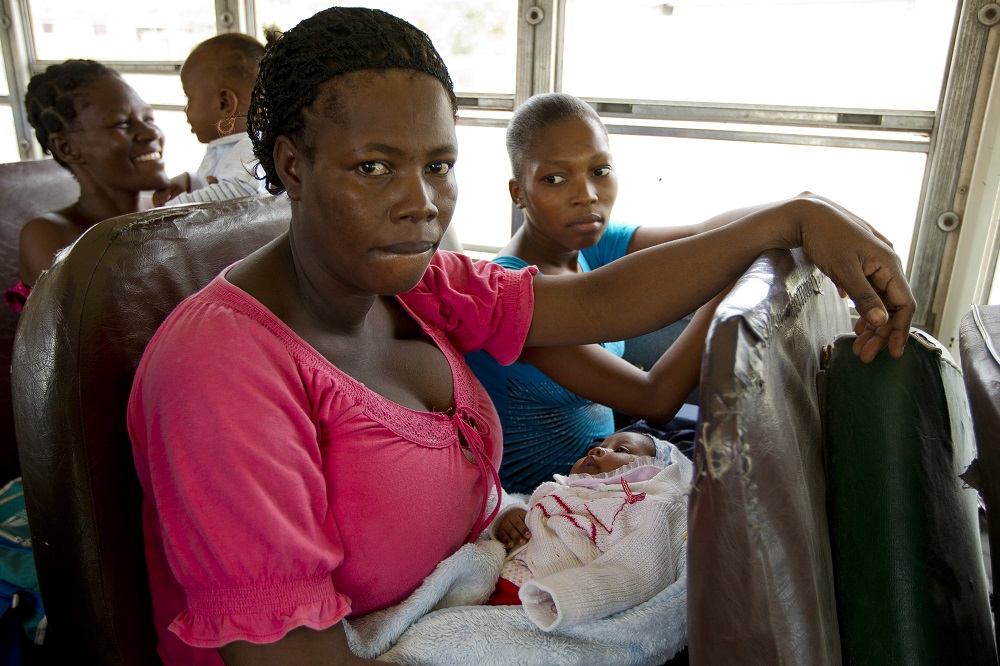Statement by the Envoy at the occasion of the Intersessional panel discussion on human rights, climate change, migrants and persons displaced across international borders
Human Rights Council, 6 October 2017
—-
Chairperson, Excellencies, Ladies and Gentlemen,
Imagine: You just survived hurricane Irma. Your island is totally destroyed and you have lost everything. Humanitarian assistance is insufficient, your child needs urgent medical care but hospitals are not functioning, and your only hope is to join relatives in a neighbouring country.
Imagine living on a low-lying atoll island in the middle of the Pacific. Coastal erosion and the salinisation of drinking water and once fertile gardens make life increasingly difficult. Wouldn’t you, if you had the means, consider migrating to another country?
Such scenarios are improbable for most of us, but they are a reality for many people all over the world. Already today, millions of people are displaced each year in the context of sudden-onset disasters, particularly floods and tropical storms. Others have to move because of the effects of slow onset processes such as drought, sea level rise, permafrost melting or desertification.
While the large majority of the displaced remain within their own country as internally displaced persons, some cross international borders to find protection and assistance abroad — usually in neighbouring countries or within their region. While some instances are well documented, the overall number of such persons is unknown. Present international law does not provide them with a right to admission and stay. Those who decide with some measure of choice to migrate in anticipation of or in the aftermath of the adverse effects of climate change may end up being marginalised and exploited as irregular migrants.
What then can human rights do to protect such people? The answer is not easy as the relationship between climate change and human rights is very complex. Nevertheless, as the consultations undertaken by the Nansen Initiative on cross-border disaster displacement have shown, human rights play an important role in at least three regards:
First, human rights provide guidance on the implementation of measures to reduce and manage displacement risks in countries of origin: People are displaced when they are exposed to natural hazards and are too vulnerable to withstand their impacts. Human factors such as population density, poverty, bad governance, or discrimination all contribute to whether people affected by the adverse effects of climate change will be able to stay or have to move. The rights to life, safety or health suggest that countries have a general obligation to protect people under their jurisdiction from the adverse effects of climate change by reducing their vulnerability through climate change adaptation- and disaster risk reduction-measures and in particular strengthening the resilience of particularly vulnerable people and communities through development efforts that are in line with the Sustainable Development Goals. Where such measures are insufficient to protect people in situ,
States may be obliged to move them out of harm’s way, particularly through evacuation and planned relocation. Such measures must respect all relevant human rights guarantees, including the rights to information and participation of affected persons or the protection of their housing, land and property rights, cultural rights, the rights of women and children, or the rights of indigenous peoples, in particular their right to self-determination. Furthermore, the cooperation of States of origin and States of destination is necessary to facilitate safe, dignified and regular migration of affected persons to other countries as an important means to adapt to the reality of climate change, for instance where low-lying atoll island States risk becoming permanently uninhabitable due to sea-level-rise.
Second, human rights are particularly important for the protection of affected persons while moving abroad: Rights to adequate food and water, shelter or health and education or rights such as those to be protected against gender-based and other forms of violence or trafficking and the right to access humanitarian protection and assistance must be respected, protected and fulfilled regardless of whether displaced persons have or have not crossed international borders. Specific efforts to protect the rights of women and children are needed as they face particularly high risks of rights abuses during displacement and migration.
Third, human rights-based approaches can help affected people to gain admission to and stay in countries of refuge and to find durable solutions: Disaster-affected persons who are displaced across international borders do not qualify as refugees per se, although forms of persecution and violence relevant under refugee law may also occur in disaster contexts. The non-refoulement obligations under international human rights law may impose constraints on returns of persons to disaster-affected countries, but this is limited to exceptional cases. However, the Nansen Initiative has identified more than 50 States that have used their discretion in migration matters to admit such persons, at least on a temporary basis or refrained from returning them to countries affected by tropical storms and other disasters. States have been willing to do so, particularly in cases where persons were seriously and personally affected by a disaster, for instance because they were wounded or had lost family members, because they faced life-threatening real risks in the country of origin, or because their return and the lack of humanitarian protection and assistance there would have caused very serious hardship. While States based such decisions on humanitarian grounds, they arguably are also warranted by human rights principles. In the absence of specific international obligations to admit and not return persons displaced across borders in the context of the adverse effects of climate change and other disasters, harmonising and strengthening such domestic approaches is crucial for the protection of such persons. The Global Compact on Migration provides a unique opportunity to commit to such an approach.
Read more about the Human Rights Council















